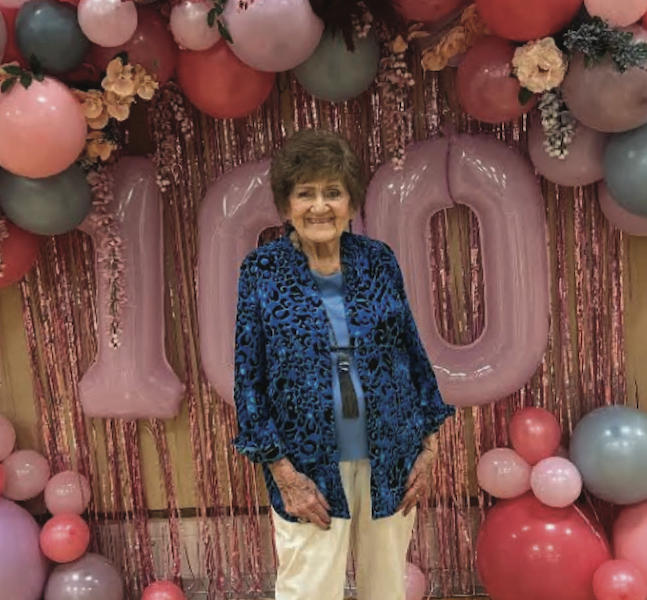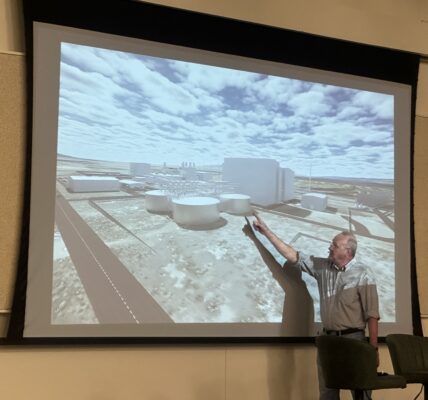In love with love: Neoma Soelberg celebrates 100 years of living a fairytale

Love. It’s the gentle union of souls and hearts, the thread of tenderness that binds one human to another. Without it, we are lost, but when we are blessed to have it in abundance, we can thrive. In her 100 years of life, Neoma Soelberg has embraced strong and constant love for beloved people and beloved gifts. With love, she has endured the heartache of grief and embraced the power of creation to cultivate joy through adversity.
Neoma and her twin sister, Wyoma, were born to Hyrum and Alice Mae Sessions Roos in Grover, Wyoming in May, 1925. As the eighth and ninth children of Hy and Mae, they were welcomed and dearly loved in a home where kindness was the hallmark of this young couple’s relationship with each child.

When the twins were three, Mae also had a toddler, and a newborn. With four children under the age of four and the other seven no older than 18, Mae succumbed to a sinus infection and passed away leaving the older children to care for the younger ones as Hy was often away for work.
Hy reassured his children that their mother was very close by. “‘You can’t see her, but she can see you.’ This was the most comforting thing to me. We knew that Mother and Dad were married in the Salt Lake Temple, and we knew that we were going to see her again and that we were going to be a family.”

Childhood during the depression was difficult. “I wouldn’t want to go back,” Neoma told this reporter. “We were always cold.” With little or no insulation in their home, and temperatures reaching as low as 50 degrees Fahrenheit below zero, sometimes visiting the livestock in the barn was the best place to find respite from the biting cold.
“We lived just like the pioneers.” Hy sheered sheep in several neighboring states and had a ranch in Tygee. The older boys left home to find work as well, so caring for the family fell to her older sisters who were all under 14 at that time. The twins did what they could, helping to prepare meals, clean the home, manage laundry, chop wood and care for one another.
When Hy had to go to Tygee for hay to feed his Grover livestock, he loaded the children into the wagon with a heated stone for warmth, or they often ran behind the wagon to stay warm. If snow had recently fallen, Hy cut the trail ahead of the horses. When they reached Tygee, the children played in the home of family friends while the stone was rewarmed in the stove. The trip home was more comfortable with hay to surround Hy’s passengers, shielding them from the cold and wind as they huddled around the hot stone.

“We never really did get warm,” she confessed. “We would stand around the potbellied stove and turn back and forth like roasting marshmallows to warm ourselves. When we went to bed, we took turns sleeping with Dad. We were always hoping we could sleep with him because he would take our feet and put them between his knees to keep us warm.”
“Dad was so kind, and my brothers were always just like him,” Neoma glowed. “Dad never swore, and I never heard my brothers swear.” Her childhood home was difficult but filled with compassion and respect. Tragically, ten years after Mae passed away, Hy also died of an infection. At age 13, Neoma was left entirely in the care of her siblings. “How lucky we were! If we had been born in this day and age, we would have been separated. We never would have known each other.”
Life wasn’t all work for Neoma and her siblings. They had bonfires almost every night in the summer, and the late winter often brought night-long coasting parties. They went out at midnight, and coasted until 9 a.m. when the snow began to soften. “We created our own fun with stories and games, and we made our own toys,” she smiled. “We had a good, rich childhood. We didn’t know we were poor, because everybody else was.”

From a very young age, Neoma discovered an affinity and love for drawing and art. When embroidering dish towels, her sisters drew a design on the towel and then embroidered the design into the fabric. When Neoma began drawing the designs, the sisters all liked her work so well that she became the artist that designed the embroidery patterns on all the linens.
As a junior in high school, Neoma became friends with a “good lookin’” young man named Lamont Herrick Heap. They dated a little and then Lamont joined the Navy. World War II changed everything for families as many moved into the cities to find work in support of the war efforts. By chance, Neoma ran into Lamont in Ogden one day when he was home on leave. He took her to dinner, and they went dancing, after which he suggested that they might get married. “We both felt like it was a good idea.” The couple was married in Idaho, and though it was a surprise to Lamont’s family that they had married, Neoma was welcomed with open arms.
Lamont completed his tour with the Navy and, after the war, began raising thoroughbred racehorses, traveling the nation on the horseracing circuit. His cutter horse team also won several championships here in Afton. During the school year, Neoma stayed in Star Valley with their four children, but as soon as summer came, they were off traveling. “I pulled horses all over this country.”

Neoma also became a successful businesswoman, opening The Trading Post in Thayne, and then moving to Flagstaff, Arizona in 1973 to open a fabric store and drapery shop with her sister. The pair began to teach quilting and sewing classes, which earned them a weekly, 30-minute television spot in the Arizona market. Neoma’s quilt designs and patterns have been featured in national magazines, including Better Homes and Gardens. She also served her community as an interior designer and painted family portraits by commission.
In the late 1980’s, Lamont became ill. Neoma watched him grow weaker each year, until he passed away in 1993. They had been married 50 years, and she felt that she would focus on her artistic ventures, but her family and friends had other ideas.
Within a short time, they had arranged a blind date for her with retired Colonel Bill Soelberg. She was told that he was shorter than Lamont and had white hair. Neoma was sure she would be unimpressed, but he was a good dancer, kind and “not too bad lookin’.” He took her to Salt Lake City for dinner and dancing, and in the chill of a fall evening, he took her cold hand and put it in his coat pocket. Not only did he successfully warm her hand, but he warmed her heart. “It just felt right,” she reminisced. They were married within two months, and she spent two decades dancing and traveling the world with him until he passed away in 2006. One of the highlights of their years together was the service of a mission to Denmark for The Church of Jesus Christ of Latter-day Saints.

With her extensive quilting skills, Neoma has designed and then created well over 1000 quilts, but her crowning achievement with her arts is a quilt she will never submit for judging. It’s a pieced quilt consisting of 1000 pieces depicting an image of Jesus Christ. “I had always wanted to paint a picture of Christ, but I never did get started because I didn’t think that I could do it justice.”
Dallin Haws, who is married to her granddaughter, Michelle, helped her create the digital pattern for this extraordinary work of art. She quilted night and day for nearly four months, despite multiple challenges to finish the quilt, which now hangs from the second story banister in her home. “He’s watching us. With Him there, I feel protected, and I never feel alone. I think it’s kind of a miracle quilt.”
“All my life, I think I have been in love with love,” Neoma admitted tenderly. “We didn’t kiss and hug or express much affection, but our family really loved each other. We fought for each other. We played and worked together.”
Through the adversity of living 100 years, experiencing the horrors of war, the rigors of demanding responsibilities and the pain of losing so many loved ones to the grave, Neoma believes that amidst the loss, life has given her a fairytale – a fairytale of beautiful relationships and wonderful creative expressions. The pursuit of her passions has kept her mind and body healthy and strong, and she plans to soak in the fairytale for as long as she is able.





